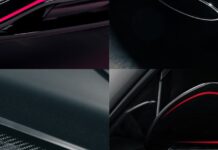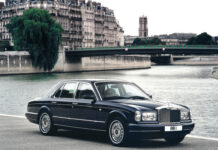
THE BUGATTI BOLIDE IS THE MOST EXTREME HYPER SPORTS CAR OF MODERN TIMES
MOLSHEIM, 11 December 2020.- Incomparably fast, light, extreme. With its Bugatti Bolide1 presented a few weeks ago, the French luxury brand is once again pushing the boundaries of what is physically possible. Never before has Bugatti designed such an uncompromising vehicle, focused solely on the race track. The Bugatti Bolide serves as an experimental design study and a carrier of technological expertise: designers and engineers created and developed the real, drivable concept vehicle in less than one year, using new materials and manufacturing processes that were proven to be reliable with both real and virtual testing laps. They simulated maximum loads, acceleration times and lap times in the virtual environment.
“With the Bolide we have dared to pursue an experiment of extremes. In our history that dates more than 110-years, there has never been a comparable model based on such a minimalist concept conceived solely around the engine,” says Stephan Winkelmann, President of Bugatti. “An output of up to 1,850 PS2 is combined with a weight of just 1,240 kilograms3 – giving an unprecedented weight-to-power ratio of only 0.67 kilograms per PS. Driving the Bolide is like riding on a cannonball.”

The Bolide is unique in terms of its technical elements, too: Bugatti has created a radically light vehicle around the iconic 8.0-litre W16 engine with an output of 1,850 PS and 1,850 newton-metres of torque. The monocoque chassis is made of light, high-strength carbon fibre, while all screw and connecting components are made of titanium. What is more, hollow, thin-walled functional components made of an aerospace titanium alloy are used at numerous points. In the simulation, the Bolide almost reaches Formula 1 figures with a top speed of well over 500 km/h4 – though without sacrificing maximum handling and agility. The Bolide takes 3:07.1 minutes4 to complete a lap of Le Mans and 5:23.1 minutes4 to get round the Nürburgring Nordschleife.

1 Fuel consumption, l/100km: this is a concept study and therefore not subject to Directive 1999/94/EC
2 When using 110-octane racing petrol; engine with 98-octane petrol at 1,600 PS.
3 The weight specification is based on the theoretically possible dry weight.
4 Simulated figures.
Source: Bugatti
Photographs: Bugatti






